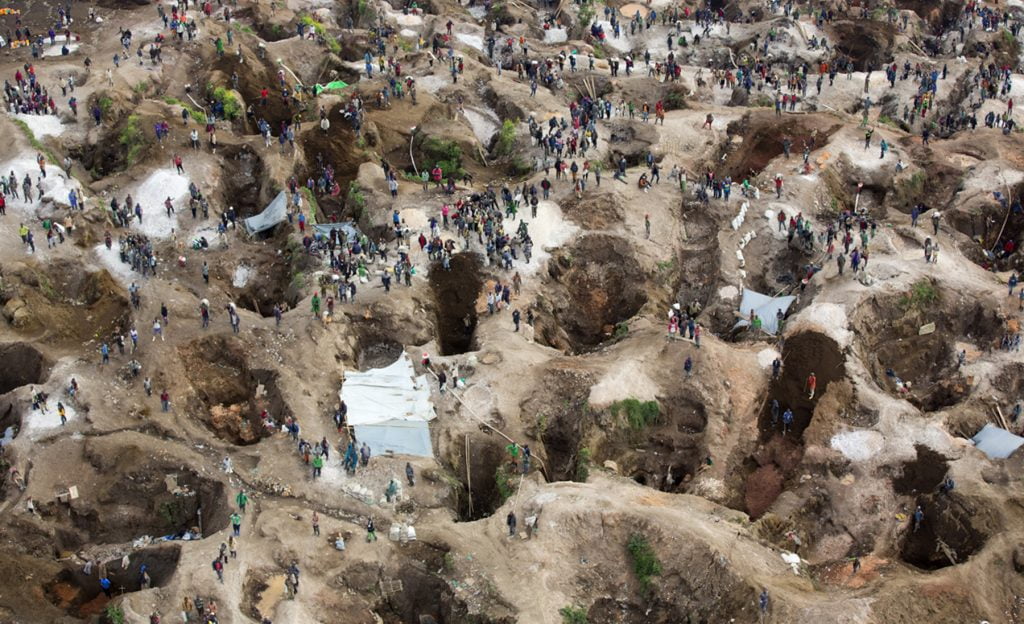

During the early days of globalization, it was relatively easy for corporations to either hide, or be ignorant of, human rights and environmental atrocities committed along their supply chain. Factories and producers were shifting manufacturing or sourcing of raw materials to an increasingly complex network of suppliers, but there was no incentive to look into how a supplier produced, for example, raw cotton or shoe soles. As long as the price was cheap and the quality was good, companies saw little need to ask further questions.
That changed, though, in the early ’90s, when nonprofits and journalists began to undercover vast labor and environmental issues connected to suppliers of large corporations, shining a spotlight on the dark side of the global consumer market. This led to the development of an array of supply chain technologies — RFIDs, remote sensing, satellite monitoring, even blockchain-based tools. Many were marketed as solutions, aimed at making it easier to monitor and respond to human rights and environmental violations along supply chains. The results, however, have been mixed.
“I applaud the efforts that NGOs [non-governmental organizations] have made,” said Michael Rohwer, Information and Communications Technology Associate Director at Businesses for Social Responsibility. “We would not see companies making so much effort [without NGOs].”
One of the issues that NGOs helped bring to light was about conflict minerals, which fueled the Congolese Civil War of the 1990s — widely considered the deadliest war since World War II. Evidence grew that many of the minerals being mined in the Democratic Republic of the Congo ended up, after trading hands countless times, in factories producing goods for major US technology companies. Smartphone, laptop and tablet sales were partly to blame for a conflict that was killing millions.
In 2010, activists achieved a major victory when the Dodd-Frank Act was passed with the inclusion of Section 1502, which mandated companies to do due diligence and report if their products contained conflict minerals to the Securities and Exchange Commission. This was followed shortly by the passing of the California Transparency in Supply Chains Act, which went even further and required all large companies doing business in the state to disclose their efforts to eradicate slavery and human trafficking from their direct supply chains.
Thinking about change was not enough.
“[These laws] really caused companies to think more about how they could collect information about what is necessary to drive transparency in the supply chain,” said Rohwer.
Thinking about change was not enough. In 2015, analysis of these disclosures found that three years after the regulations had passed, few companies could accurately source their minerals. That same year, massive wildfires fueled by rampant deforestation connected to palm oil, the most consumed food oil in the world, burned 2.5 million hectares of rainforest. And this happened just two years after the horrific Rana Plaza factory collapse, in which more than 1,100 people — mostly women — died while producing clothing in unsafe conditions for global brands including Joe Fresh, Primark and Benetton.
It turned out that fixing supply chains was a lot harder than expected. One of the early complaints, and reasons that many companies could not fully comply with Section 1502, was the sheer difficulty of mapping those intentionally complex supply chains.
“There is definitely a decline in leverage the further away you are from a particular company,” said Rohwer. “Even two degrees of separation is enough to change the leverage formula.”
In response to both the documented atrocities and the new laws, a plethora of tools meant to illuminate supply chains emerged. On the hardware side are technologies like RFIDs, which can increase supply chain visibility, and newer tools like Stardust, a dustlike tracker that helps assess the authenticity of goods along a supply chain and is nearly impossible to detect and alter — some believe it could address illegal timber.
There are also software tools that allow for better aggregating, analyzing, visualizing and verifying of supply chain information, like Global Traceability’s Radix Tree, a platform that enables buyers to collect information from suppliers to establish a chain of custody. The latest trend “revolution” in supply chains is blockchain, the digital distributed ledger that powers Bitcoin.
“We’re seeing a lot of progress in attempts to utilize technology … For many of them, however, the jury is still out on how effective they can be.”
There is even a conference, SCTECH, which promises to “[empower] Supply Chain Executives to make informed decisions and select the right technology for their business processes.” But while technology is driving change across the industry, some question whether these high-tech solutions are actually helping create a transparent and ethical supply chain. “We’re seeing a lot of progress in attempts to utilize technology,” said Kilian Moote, Project Director for KnowTheChain, a Humanity United project. “For many of them, however, the jury is still out on how effective they can be.”
One of the areas that has seen the most positive media attention is remote sensing, at the forefront of which are companies like Orbital Insight and Descartes Labs, which both see potential for their technologies to help fill information gaps in supply chains around the world. The technology itself is getting far more powerful: Satellites are both increasing technological capability in quality (the amount and breadth of data they can collect) and quantity (how often they can collect data over a piece of the earth).
This has led to some important breakthroughs, such as the Global Land Analysis and Discovery (GLAD) alerts system launched by the nonprofit World Resources Institute, which works with Orbital Insight. GLAD automatically analyzes data and sends alerts when a particular region in the tropics looks like it is being deforested.
So far, though, the applications of satellites to make information more ethical and transparent has been limited to a few initiatives like GLAD. Mostly, companies are using satellites for other purposes: to better understand crop yields or to spy on a competitor’s supply chain. Orbital Insight and Descartes Labs are focusing primarily on the commercial applications of their products first and not yet doing much on the ethical side, though both plan to. In fact, many of these tools showcased at conferences or in press releases are not yet being utilized on a wide scale.
“There are promising concepts. The question is, will they move beyond pilots, and can they get to a place where wide-scale adoption is not only possible but actually happening?” said Moote. “And at that point we’ll know if there is a market for these tech solutions.”
It’s not even clear that technology itself matters. Simple tools with actionable plans could be more effective than fancy, expensive ones. For example, one of the most successful tools is the self-described tech-agnostic Laborlink, a product of Good World Solutions, which supplies workers around the world with a secure, anonymous method of providing information about working conditions in their factories. It addresses one of the key weaknesses of the system that was implemented after the initial wave of revelations about working conditions in the 1990s, in which auditors enter factories at regular intervals and conduct checklist walk-through examinations.
“Auditing just does not have that many data points,” said Beth Holzman, Director of Engagement and Operations at Laborlink. “It’s specifically focused on a [narrow] compliance checklist to understand what is happening in a factory and doesn’t really get into any wider analysis, which can reflect more the reality on the factory floor.”
Auditing is haphazard and unreliable, with well-documented cases of fake reports. Moreover, workers’ voices are only tangentially included, with Holzman estimating most audits only include statements from 10 to 20 workers maximum. As factories and plantations can have upward of 1,000 workers, this can be woefully inadequate.
Laborlink thrives partly because it does not rely on the latest smartphones or high-tech, remote-sensing technology. It utilizes whatever technology people already have. In Cambodia or India, this can be simple feature phones with SMS capability, whereas in China, the ubiquitous app WeChat is commonly used.
“We really are trying to ensure that, in the use of technology, we’re putting workers at the heart of this process.”
“We really are trying to ensure that, in the use of technology, we’re putting workers at the heart of this process,” said Holzman. “They have the ability to provide data and can use tech to better their own engagement.”
This approach has been successful in creating knowledge about what’s taking place in factories and giving companies that care an opportunity to address those concerns.
“We’ve reached a million workers and gathered 3.5 million data points,” said Holzman. “That information can be shared with factory managers to say, ‘How would you actually work to improve supply chain practices?'”
Other low-tech actors making a difference are NGOs. It is because of them that we have supply-chain accountability legislation, and it’s often them, or their partners on the ground, who are spreading the word about unsafe working conditions or illegal deforestation.
“Improvements in technology at the local level have been instrumental in communities’ ability to participate in the protection of their forests,” said Emma Lierley, Forest Communications Manager with Rainforest Action Network. “And improvements in this area could be of great benefit.”
But RAN does not expect technology itself to be the solution. It has been working on supply-chain issues since its inception, and it focuses on both environmental degradation and human rights violations in tropical-forest regions. To RAN, the idea that multinational corporations lack knowledge about what’s really happening in their supply chains when it can find out and publish verifiable reports is incredulous.
“Time and time again we have seen companies use new tools and technology to further obfuscate the issue rather than to truly take responsibility for the conflicts in their supply chain,” said Lierley. For example, shipping data on who is buying and selling palm oil could illuminate how supply chains connect to labor violations widely documented in Southeast Asia, but it is prohibitively expensive and often inaccessible to third parties like NGOs or journalists. Similarly, access to mapping data about land ownership could allow NGOs to connect illegal deforestation and fire to global companies, but the data remains under lock in Indonesian government and corporate databases.
“The lack of transparency in palm oil supply chains comes down to a lack of willpower, not a lack of tools,” said Lierley.
This can be demonstrated by the companies that have made progress. Years ago Nike was the poster child for labor violations in its subcontractors’ factories, but after years of hard work in collaboration with NGOs and academia, it has become a model in the shoe industry, recently releasing a map of all of its factories. Similarly, Intel, once complicit along with most of the technology industry as likely using conflict minerals, has, after doing a detailed public analysis with the NGO Resolve, officially declared its supply chain as conflict free.
Neither used fancy technology as an end-all solution, and both spent years figuring out an actionable plan. The problem itself was clear from the start.
“If you want to know what is going on in your supply chain, you don’t need tech to find that,” said Moote. “You need technology to solve the problem.”

Technology cannot be a solution by itself. All it can do is provide better information — perhaps more-accurate information, perhaps more-actionable information, perhaps better-organized information, but in the end just information. And sometimes information alone is not enough.
Sasha Lezhnev, Associate Director of Policy at the Enough Project, a leading NGO that helps raise awareness about conflict minerals, believes tools need real human support to be effective.
“Technology can help on conflict minerals, but it has limitations,” said Lezhnev. “For example, digital scanning of minerals can improve tracing at mines, but human intelligence is needed to verify claims of minerals traders of being conflict free or not.” Without the latter, the former is not useful.
While change has been made by a few companies like Intel or Nike, it is not happening quickly enough and is not widespread enough to have made supply chains more ethical than they were before the digital revolution.
The data is still grim. There are 45.8 million people still suffering in conditions of modern slavery, often working on tea plantations, seafood ships, poultry farms or factories supplying global supply chains. Even in the formal sectors, the situation has not changed much. Many more have lost their lives in factory disasters or accidents since Rana Plaza, and if workers try to stand up, they face violence like what is taking place in Cambodia, a major hub of global textile production.
“Technology can never be the solution around the fundamentals of human nature.”
The environment is suffering too. Deforestation is still continuing, and if action isn’t taken soon, there won’t be any orangutans left in Borneo, among other major problems. The existence of human and environmental violations along global supply chains is not a problem of technology but a problem of the wider global society.
“There are so many variables that exist … governance, corruption, shrinking of civil space,” said Moote. “You can’t decouple those trends; they impact the utilization of technology. Technology can never be the solution around the fundamentals of human nature.”
The problem may not be that we don’t understand the origins of our products but rather whether understanding is enough to make industry, consumers or governments act any differently. Satellites, blockchain tools, artificial intelligence and massive datasets can’t solve that.
[“Source-engadget”]




